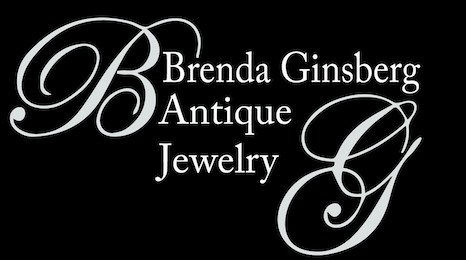April birthstone Diamonds in antique jewelry - Post 10.
How lucky can anyone get? Born in April, with its diamond birthstone.
 #7513 GIA engraved diamond. Superb E color!!
#7513 GIA engraved diamond. Superb E color!!
"Diamonds are a girl’s best friend". Give a girl a diamond and she has an almost indestructible jewel that captures the
light around her and captures the attention of those who are near. Marilyn got it right. Nothing enhances beauty and the
loveliness of the gems it surrounds like a diamond. And, Marilyn was famously savvy: she knew that diamonds have held
their value over the centuries.
 #6249 Art Deco Diamond Engagement Ring.
#6249 Art Deco Diamond Engagement Ring.
A diamond's internal structure leads to the clear brilliance of the gem. Rarely, a few impurities do get in giving us
diamonds with hints of blue, yellow, brown, green, purple, pink, orange and red. These are all the more sought-after for
their rarity and prices realised can reach the stratosphere. No wonder diamonds are associated with many mystical powers.
#5207 Brooch with natural fancy yellow and white diamonds. 
Diamonds take over a billion years to form deep in the earth. There is evidence that some diamonds may have been formed on
asteroids in space and left on Earth at impact. Before modern technology permitted miners to dig deep into the bowels of
the planet, most diamonds were alluvial - found where running water lifted them out of the earth. Diamonds were found where
once a river flowed. Modern technology not only allows us to dig deep into the earth, but deep under water, whether sea or
lakes. Scientists can even tell by the surface formation of the ground where diamonds are likely to be found, thus saving
mining companies millions of dollars in their search for new sources of this precious gem.
Recognised as the hardest gem, there is a special word 'adamantine' for the hardness of a diamond. No other gem comes close
to it in this quality. That does not mean that a diamond cannot chip or crack. This can happen to any diamond, especially
if there are internal flaws in its structure. These flaws, known as inclusions, not only weaken the diamond, but interfere
with the reflective
quality of the stone, making it less shiny. Thus a diamond with absolutely no flaws will command a premium price.
Look for diamonds as close to a perfect clarity as you can afford and if there are to be flaws (after all, who can afford the
perfect stone?), find a stone with inclusions near the edges, where it has less effect on the overall look of the stone.
Diamonds have been recognised and enjoyed for thousands of years, but it is only in the last few centuries that technology
has allowed us to cut and polish them to show off their true brilliance and lustre. Often, diamonds found in a really old
antique jewel are not quite as brilliant as those cut at later dates. Once technology allowed the brilliance of the diamond
to shine through, there was no holding back. Many of us antique-lovers especially appreciate the subtlety of the old stones,
even if they are not as immediately glitzy as their modern counter-parts. There is a strong trend in jewelry design today to
revert to the rose cut. Nothing really goes out of fashion, especially when it comes to diamonds.
Many early diamonds came from the Golconda mines of India, supposedly with the
most transparent of colours (due to an almost total lack of nitrogen) and synonymous with great wealth. One of the famous Golconda diamonds is the Hope Diamond.

#7246 Beautiful Anglo-Indian diamond necklace.
A number of gems may look superficially like a diamond, but should never be confused with this hardest of all gems.
Transparent, white sapphires and pale, pale aquamarines may make a beautiful diamond-like jewel at a fraction of the cost
of the real thing.
Over the last few years, technology has perfected the creation of lab-grown diamonds. Yes, they are diamonds, but not the 'real' thing that nature created. Their value has decreased tremendously and will continue to decrease as technology and our understanding grow. Already, we are told that the resale value of a lab-grown diamond is close to zero. Do not waste your money on something that will devalue. After a few bumps caused by the uncertainty of the lab-grown market, natural diamonds appear to be back in demand and are still fetching very high prices on the secondary market.
The diamond has become a symbol of innocence, virtue, purity and constancy - perfect for today’s use in engagement and
wedding rings. In Medieval Europe knights wore them to make themselves invincible. Then, as today, it is believed that
diamonds increase the magical powers of other near-by gems. It is said the powers inherent in this gem are stronger when
received as a gift.

#5578 Wonderful quality diamond Earrings.
This post is just an introduction to the wonderful world of diamonds. We will learn more about these amazing gems at another date.
Questions and comments: Please email antiques@brendaginsberg.com
Find jewelry on www.brendaginsberg.com

